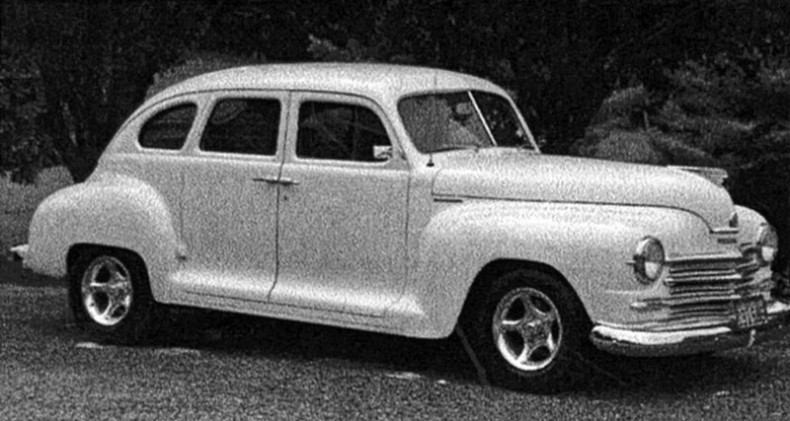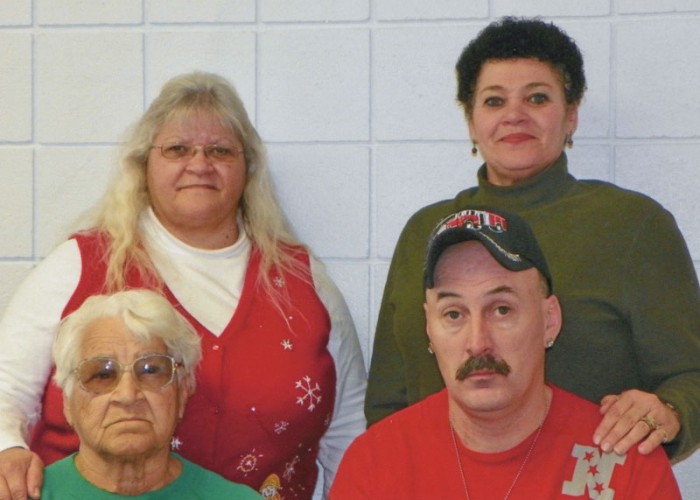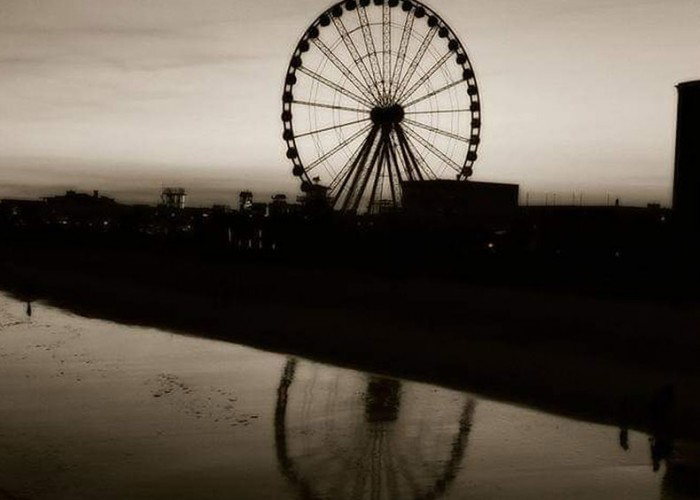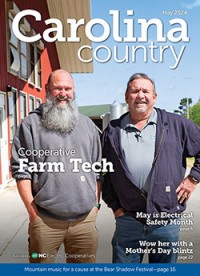A Ride in the ‘White Elephant’
I’ll never forget my father’s ’47 Plymouth. Believe me, I’ve tried. That car was a source of unbearable humiliation during my sensitive early teenage years. I took it as visible proof that my dad had no pride in himself or the family reputation.
The inside wasn’t so bad, considering that the car was five years old when we got it and had been used as a taxi. Its bristly, horsehide-like upholstery was amazingly intact, though there was an unidentifiable splotch here and there. (Cabbies often dine in their cars and some of their most loyal customers are drunks.) The seats were covered with the same rough material, which seemed to have retained a goodly portion of the tobacco, booze and body odors of its previous users. The wooly upholstery also stored up heat, which, combined with the rich assortment of smells, made open-air travel a necessity, even in winter.
The ’47 Plymouth body style can best be described as Early Blob. It sloped from windshield to rear bumper in one undulating line resembling a turtle shell. Our Plymouth was a pale yellow. As time took its toll, the yellow faded to semi-white, what you would probably get if you mixed a spoonful of mustard with a gallon of milk.
Still, the inside of the car didn’t look so bad at first. But after our Plymouth got a few more years and many more miles on it, the clutch began to stick. Instead of having it repaired, my father tied a cord to it so that he could pop it out when he changed gears. He somehow became adept at managing steering wheel, stick shift and manual clutch with only two hands. That clutch-string accessory looked odd, but the interior didn’t really get bad until the car’s “newness” wore off and my father began to haul sand and even pigs in the back seat from time to time.
Anyway, I didn’t worry much about the inside of our family car because my friends couldn’t see that. It was the outside that brought me shame. The ’47 Plymouth body style can best be described as Early Blob. It sloped from windshield to rear bumper in one undulating line resembling a turtle shell. Our Plymouth was a pale yellow. As time took its toll, the yellow faded to semi-white, what you would probably get if you mixed a spoonful of mustard with a gallon of milk. One of my classmates, who was aware of my acute embarrassment over our car, always loudly announced “The White Elephant approaches!” when he saw it coming.
Unlike me, my father didn’t care what people thought. A car was just a tool to him. He wouldn’t even tuck the loose rubber molding at the bottom of the driver’s door back inside the car. I can see it merrily bouncing along the pavement even now. Some cars used to have protruding “curb-finders.” I guess that molding was Dad’s road-finder.
Even worse, my father (who was a brick mason) would cram tools, lumber and sometimes a huge wheelbarrow as far as he could (which was not very far) into the Plymouth’s shallow trunk, and rope the lid down on the whole mess. Then he would make a gravity-defying run to the building site, often right through the middle of town.
When I started high school and became sophisticated, I refused to ride in our car-truck any longer. It simply was not good enough for me. My two younger brothers always waved gleefully as they rode past me walking to school in freezing rain. My father ignored me on those mornings. I don’t know if he was disgusted or just concentrating on the clutch-string.
My family has risen in the world since then. Dad later bought a Chrysler New Yorker and, now that he doesn’t need one, a truck. My own children won’t wear anything but brand-name clothing, which is hard for me to understand. I tell them not to be so vain.
Send Us Your Memories
We love sharing photos and memories dear to our readers.
Submit your story and photos-
More of your memories
-
Share this story:


_73e82279cc7d8bab624f9218362083ac.jpg)




